
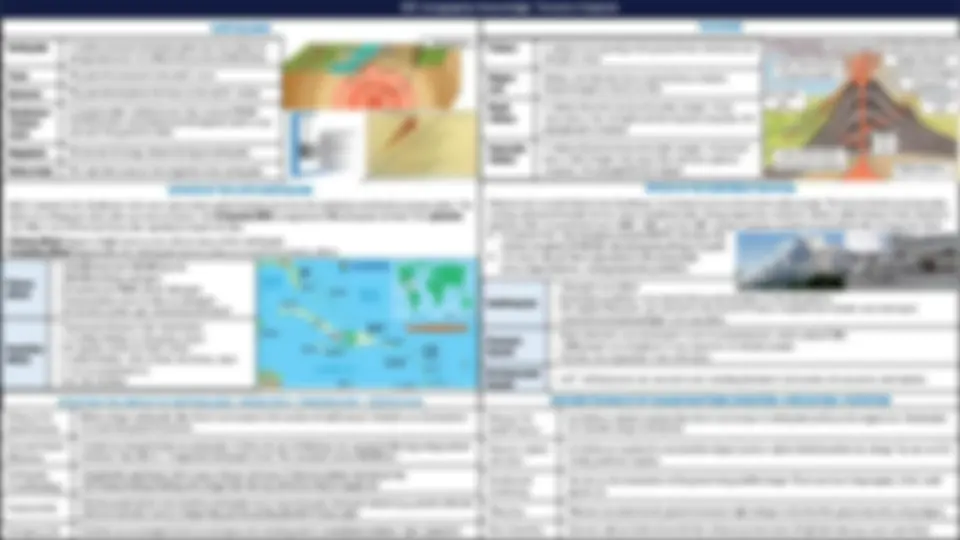
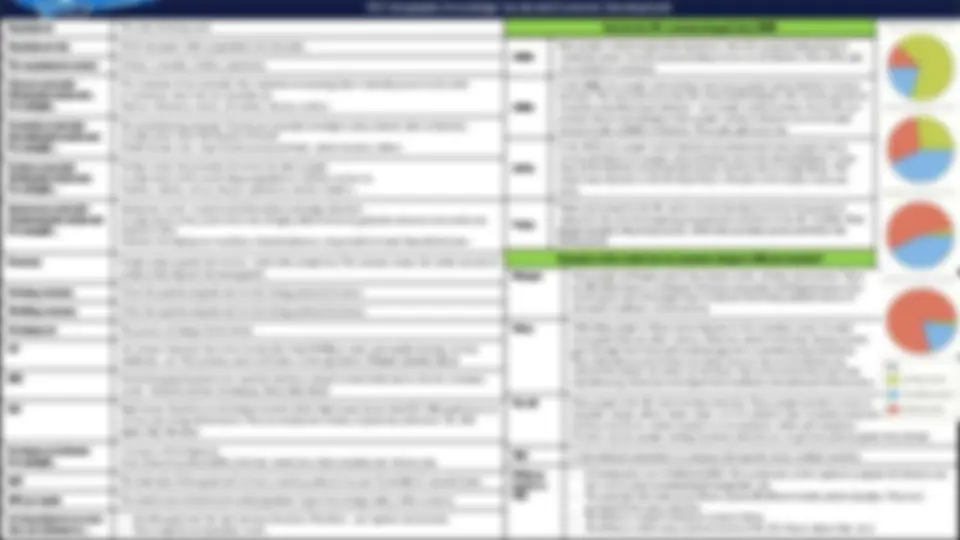
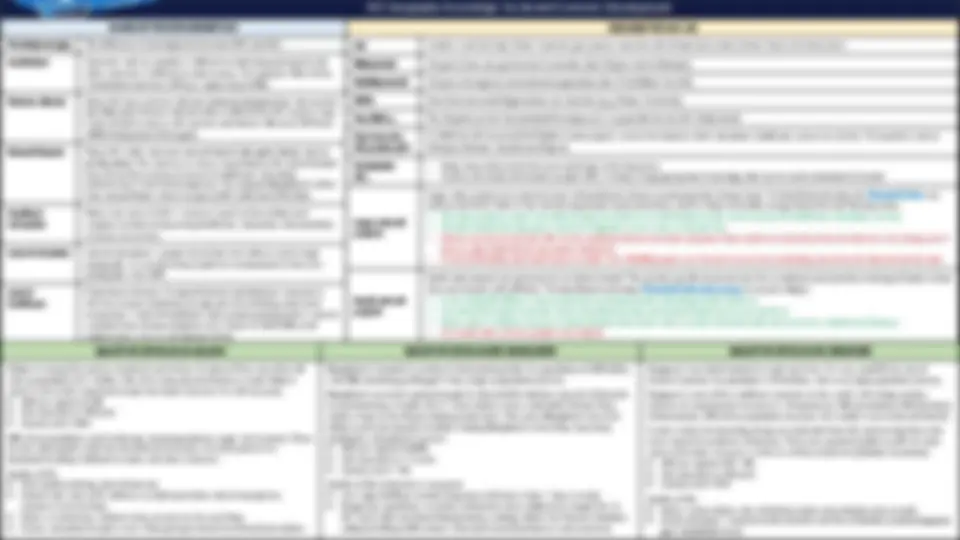
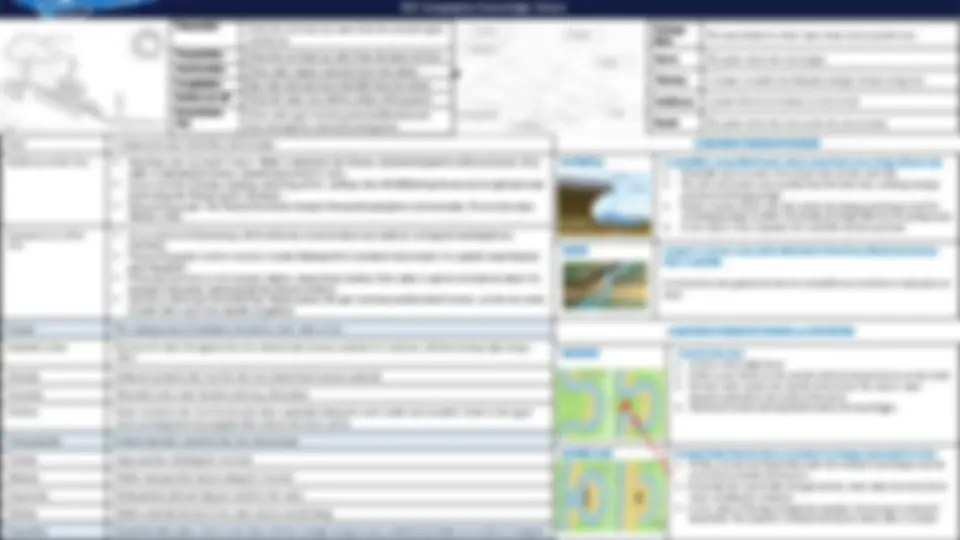
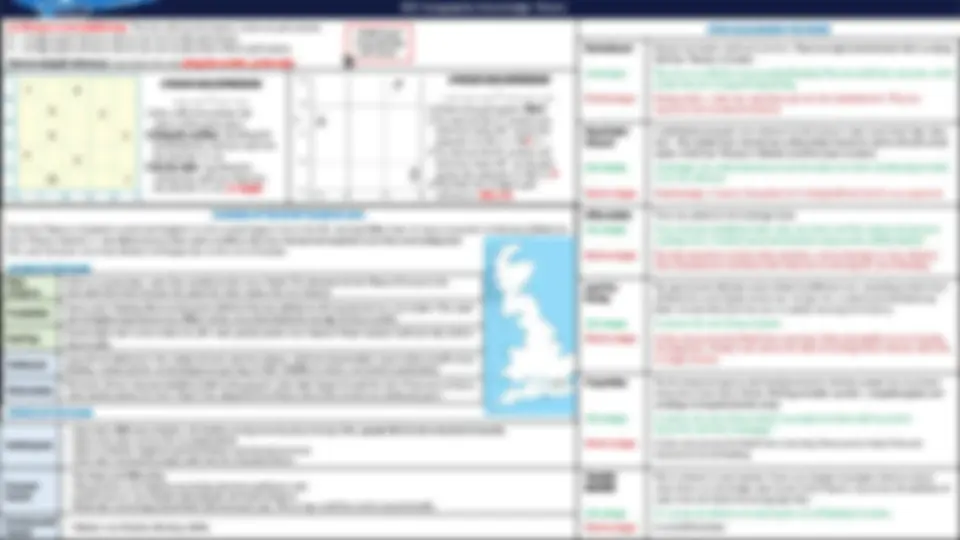


Study with the several resources on Docsity

Earn points by helping other students or get them with a premium plan


Prepare for your exams
Study with the several resources on Docsity

Earn points to download
Earn points by helping other students or get them with a premium plan
Community
Ask the community for help and clear up your study doubts
Discover the best universities in your country according to Docsity users
Free resources
Download our free guides on studying techniques, anxiety management strategies, and thesis advice from Docsity tutors
London is nearly a megacity-9.6m people. Lots of cultural events e.g. Notting Hill Carnival. Physical Geography of London. Lowland area • Area is easy to build ...
Typology: Summaries
Uploaded on 09/27/2022
1 / 9

This page cannot be seen from the preview
Don't miss anything!






The Geography Knowledge – Geography of the UK and beyond.
Human Geography of London.
Better transport links, making it easier to travel and see people. By 2040, 70% of the UK will live in urban areas. Do you think this is a good idea or do you think more people should live in rural areas?
KS3 Geography Knowledge: Tectonic Hazards Natural Hazard A natural process that poses a threat to people and property. If it poses no threat to humans it is called a natural event. Meteorological hazard A hazard that occurs in the atmosphere (e.g. hurricane, thunder and lightening, tornado, drought) Hazard risk There is a higher risk if…. The probability that a natural hazard occurs.
Ethiopia Most people in Ethiopia work in the primary sector, on farms and in mines. There are 58 million farmers in Ethiopia. Farming is important to Ethiopia because they need to grow and sell enough crops to improve their living standards (invest in education, healthcare, infrastructure). China 220 million people in China work in factories in the secondary sector. It makes more goods than any other country. China has started to develop, having recently gone through their industrial revolution (growth in manufacturing in factories). They still produce most of their own food, however the use of machines has reduced the number of workers on the farms. Due to the money they earn from manufacturing, China have developed their healthcare education and infrastructure. The UK Most people in the UK work in tertiary industries. These people provide a service in hospitals, schools, offices, banks, shops…etc. We still have some secondary industries but they need fewer workers because we use machines, robots and computers. We have very few people working in primary industries as we get most primary goods from abroad. TNC A transnational corporation is a company that operate across multiple countries. Evidence Apple is a TNC
KS3 Geography Knowledge: Social and Economic Development Development gap The difference in development between HICs and LICs. Landlocked Countries with no coastline = difficult to trade (import/export) with other countries = difficult to make money. For example, Mali, Africa, is landlocked and has a GPD per capita of just $901. Extreme climate Many LICs have extreme climates (extreme temperatures, too much or too little rain). Extreme climate make it difficult for LICs to grow crops = lack of food to eat or sell = poverty and famine. Between 1978 and 1998, Ethiopia had 15 droughts. Natural Hazards Many LICs suffer common natural hazards ( droughts, floods, storms, earthquakes). The country is so busy responding to the natural hazard they do not have money to invest in healthcare, education, infrastructure = lack of development. For example Bangladesh suffers from annual floods which in August (2017) affected 6.9 million. Conflict & corruption Many wars occur in LICs = money is spent on the military and weapons instead on improving healthcare, education, transportation or access to services. Lack of education Lack of education = people do not have the skills to work in high paying jobs. As a result many people are unemployed or have low paying jobs = low GDP. Lack of healthcare Waterborne diseases & tropical diseases (malaria) are common in LICs due to poor sanitation (sewage gets into drinking water) and mosquitoes. A lack of healthcare stops people getting better = cannot work/die from diseases/children miss school. In 2015, 89% of all malaria cases were in sub-Saharan Africa.
Malawi is a long thin country, located in east Africa. It is about ½ the size of the UK with a population of 17 million. One of its main physical features is Lake Malawi, which is rich in fish = food and income for locals, however it is still very poor. ➢ GPD per capita = $780. ➢ Life expectancy = 55 years ➢ Literacy rate = 61% 90% of its population work in farming, exporting tobacco, sugar, tea & cotton. These are low value goods which do not make much money. It is also poor as it is landlocked making it difficult to trade with other countries. Quality of life: ➢ Poor quality clothing, lack of footwear ➢ School: class sizes of 97 children, no table and chairs, lack of equipment, students sit on the floor ➢ Home: no electricity, children sleep on mats on the mud floor. ➢ Future: education for girls is rare. Most girls get married at 18 and have babies. Bangladesh is located in southern Asia bordering India. Its population of 165 million, with 98% identifying as Bengali. It has a high a population density. Bangladesh currently is going through its Industrial Revolution = growth of factories & manufacturing. It makes the 2nd^ most clothes in the world (after China). Most clothes shops in the UK get clothing made there. This earns Bangladesh over £ billion a year and employs 4 million, helping Bangladesh to develop, improving healthcare, education & services. ➢ GPD per capita = $1698. ➢ Life expectancy = 72 years ➢ Literacy rate = 73% Quality of life in factories is not great: ➢ Low wages (£45 per month), long hours (14 hours a day, 7 days a week) ➢ Dangerous conditions: a number of factories have collapsed or caught fire. In 24 th^ April, 2013, the Rana Plaza (a factory making clothes for Primark, Matalan) collapsed killing 1100 workers. Physical & emotional abuse is also common. Singapore is an island located in south east Asia. It is very small (½ the size of Greater London). Its population is 5.5 million, with a very high population density. Singapore is one of the wealthiest countries in the world, with a large tertiary industry. Its employment structure is: 1% (primary), 16% (secondary), 83% (tertiary). Unfortunately, 15% of the population are poor: the wealth is not evenly distributed. It earns money by importing cheap raw materials from LICs and turning these into more expensive products in factories. These are exported (sold) = profit. Its main source of income, however, is from its tertiary industries ( finance, insurance ). ➢ GPD per capita = $57,700. ➢ Life expectancy = 84 years ➢ Literacy rate = 97% Quality of life: ➢ Home: smart clothes, lots of delicious food, many families have a maid. ➢ Great education – extracurricular activities and lots of facilities ( swimming pools, gym, basketball court ) Aid Another word for help. Richer countries^ give poorer countries aid to help them make a better future for themselves. Bilateral aid Aid given from one government to another (the UK gives aid to Pakistan). Multilateral aid Aid given through an international organisation (the World Bank, the UN) NGOs Non-Governmental Organisations are charities (e.g. Oxfam, WaterAid). The DfID is… The Department for International Development is responsible for the UK’s bilateral aid. How does the UK provide aid? In 2018, the UK invested £14.5 billion in aid projects, such as for disaster relief, education, healthcare, access to services. To countries such as Ethiopia, Pakistan, Somalia and Nigeria. Sustainable aid…
KS3 Geography Knowledge: Weather and Climate EFFECTS OF THE TEWKESBURY FLOOD A river flood is when a river overflows its banks and water spreads across the surrounding land. It is caused due to heavy precipitation. Tewkesbury, a market town in Gloucestershire (south west England), was badly affected by a flood in 2007. Following a very dry April, the summer of 2007 was one of the wettest on record. By the end of June, heavy rainfall overloaded rivers, leading to flooding in some areas in Gloucestershire. However, during July the rains were even heavier. On 20th July, two months' worth of rain fell in 14 hours. This resulted in widespread devastation.
Between 2002 and 2009 south-east Australia experienced its worst drought in 125 years. This was known as the Millennium Drought. The dry and hot conditions resulted in desertification. This is when land becomes ‘desert like’ and too dry to grow crops on. CLIMATE GRAPHS
Social impacts
KS3 Geography Knowledge: Rivers River A channel of water which flows downstream. Social uses of the river ▪ Supplying water to people’s homes: Water is taken from the Thames, cleaned and piped to millions of homes. Dirty water is collected from homes, cleaned and put back in rivers. ▪ Leisure activities: Rowing, canoeing, swimming, picnics, walking. Over 250,000 fishing licenses are brought each year to fish along the Thames and its tributaries. ▪ Transporting people : The Thames River Boats transport thousands of people to work everyday. Tourists also enjoy Thames cruises. Economic uses of the river ▪ Use in industries: Factories (e.g. the Ford Factory in east London) uses water for cooling and washing factory machinery. ▪ Transporting goods to other countries: London Gateway Port is located in East London. It is used for importing and exporting goods. ▪ Producing electricity to sell. In power stations, steam drives turbines. River water is used to cool tanks of steam. For example in the power station beside the Thames at Didcot. ▪ Agriculture (farming) A lot of the River Thames passes through rural areas and farmland. Farmers use the river water to water their crops in dry weather (irrigation). Erosion The wearing away or breakdown of rocks by wind, water or ice. Hydraulic Action The force of water hits against the river channel and removes material. It is common with fast moving, high energy water. Abrasion Sediment carried by the river hits the river channel and removes material. Corrosion Chemicals in the water dissolve rocks (e.g. limestone) Attrition Stones carried by the river hit into each other, gradually making the rocks smaller and smoother. Rocks in the upper course are large and more angular than rocks in the lower course. Transportation Eroded material is carried by the river downstream. Traction Large particles roll along the river bed. Saltation Pebble-sized particles bounce along the river bed. Suspension Small particles (silt and clay) are carried in the water. Solution Soluble materials dissolve in the water and are carried along. Deposition Deposition takes place where a river does not have enough energy to carry sediment (its load). As a result it is dropped. WATERFALL A waterfall is a steep fall of water, where water flows over a ledge of hard rock.
LANDFORMS FORMED BY EROSION and DEPOSITION MEANDER A bend in the river.